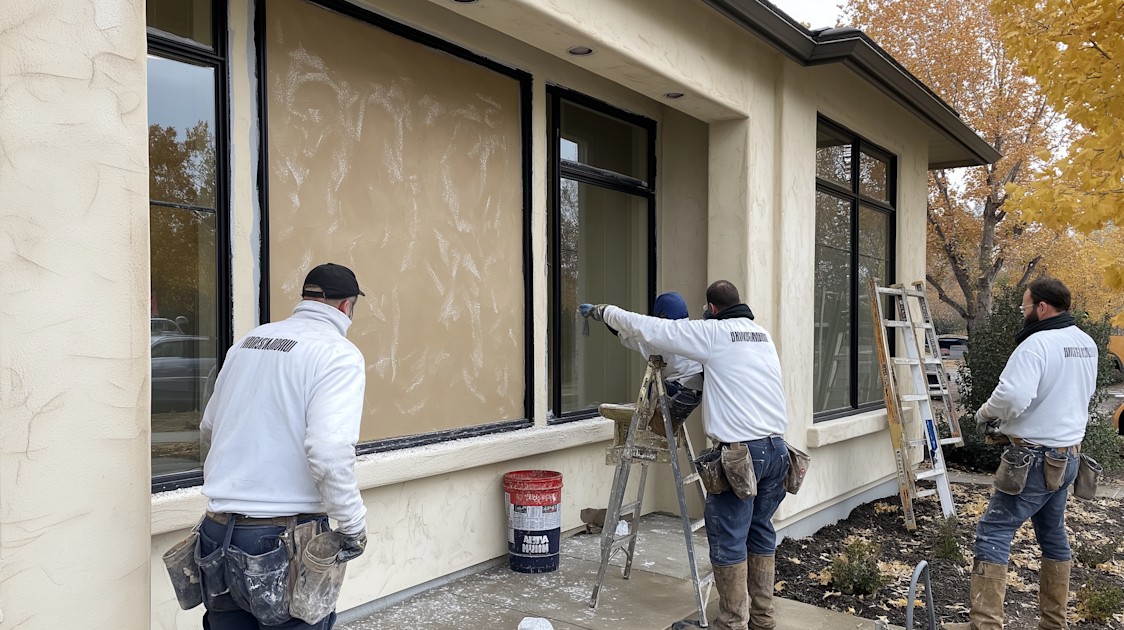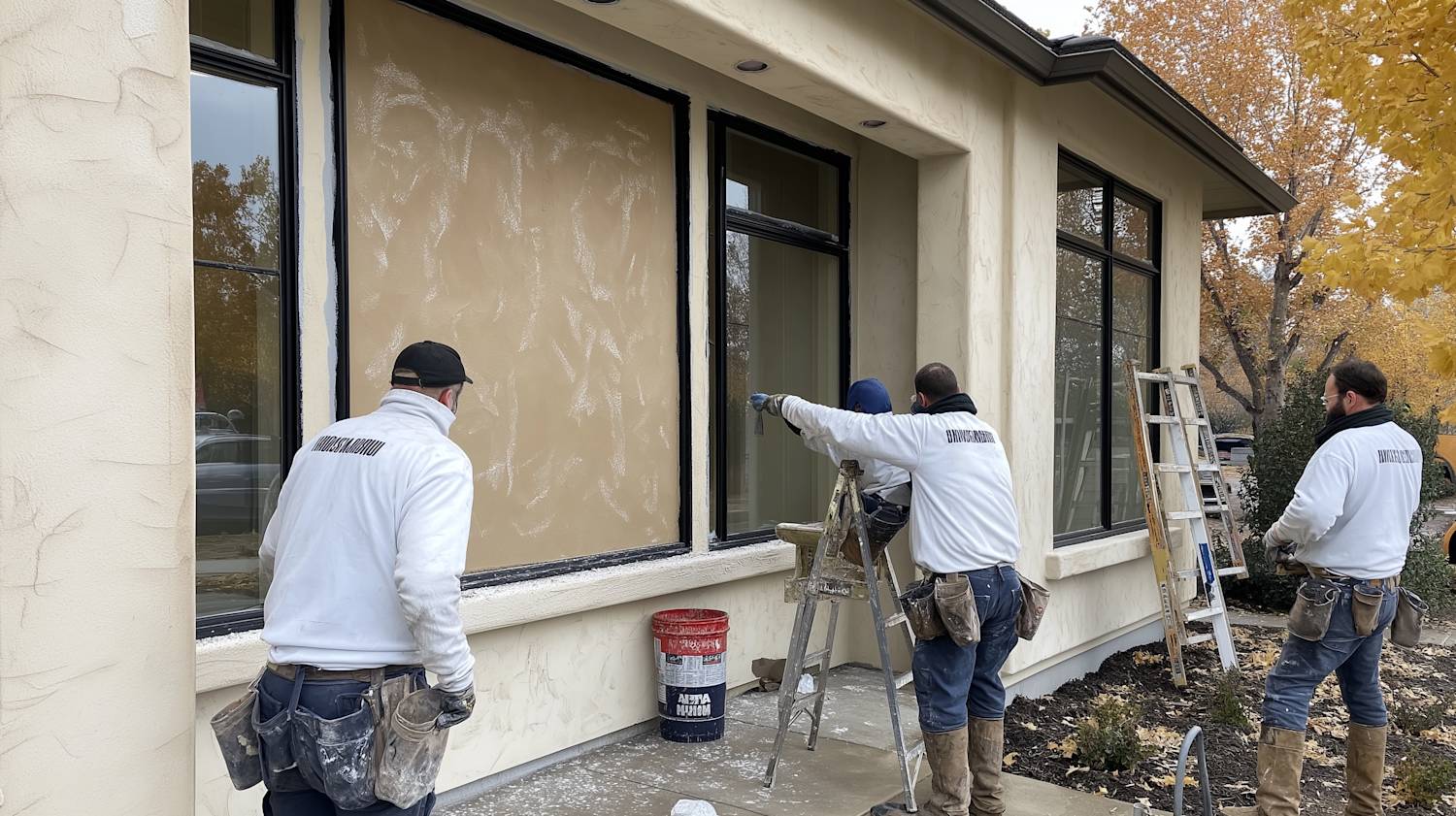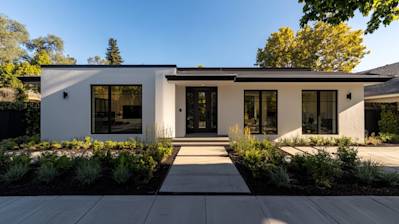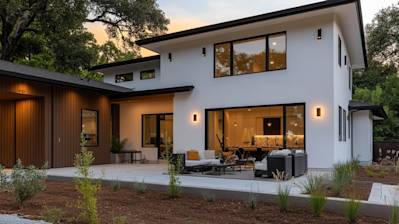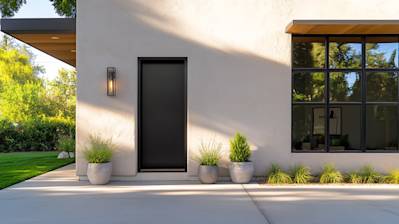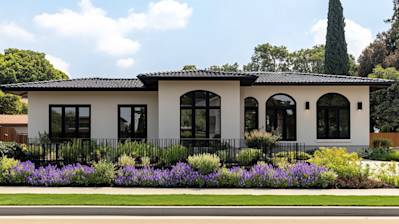Stucco is known for its ability to instantly enhance the aesthetic appeal of any structure while adding an extra layer of protection against harsh weather conditions. Over the years, homeowners have relied on stucco for both interior and exterior finishes. In this article, you will learn how to stucco over exterior windows.
Understanding What Stucco Is
Stucco is a type of plaster made by mixing cement, sand and lime, although some modern versions use synthetic materials. It's most commonly used for coating wall surfaces and can greatly enhance the feel and appearance of your home. It's vital to understand how stucco works before delving into how to stucco over exterior windows.
Importance Of Stucco Over Exterior Windows
Stucco over your exterior windows carries the following benefits:
Increased Home Value: The aesthetic richness of stucco adds an appealing curb appeal, which can significantly raise the value of your property.
Weather Resistance: Stucco is known for its ruggedness. It can withstand harsh weather conditions and is less likely to deteriorate over time; thus, it protects home exteriors while preserving the windows themselves.
Preparing The Window Area For Stucco Application
To get the desired result, careful preparation is key. Below are the steps involved in the preparatory process:
- Clean the area around the window from any dirt.
- Remove any loose paint or old caulk.
- Fix any broken or damaged parts of the window.
- Apply a sealer to any bare wood to prevent moisture absorption.
Materials and Tools Needed for Stucco Application
Here are the most important tools and materials needed for this task:
- Stucco
- Trowel
- Water
- Bucket
- Mixing tool
- Masking tape
- Plastic sheet
Step by Step Guide To Apply Stucco Over Exterior Windows
Step 1: Mask Off the Window
The use of masking tape will prevent the stucco from getting on the glass or window frame. Cover the window properly with a plastic sheet and tape it down using the masking tape.
Step 2: Mix the Stucco
Follow the manufacturer’s instructions to mix the stucco. The consistency should be similar to thick peanut butter. It is usually advisable to mix enough stucco to last for about an hour's work because it hardens quickly.
Step 3: Apply the First Coat of Stucco
Use a trowel to apply the first coat of stucco around the window, pressing it firmly into the surface. Ensure the stucco is spread evenly and covered all the areas.
Step 4: Scratch the First Coat
After allowing the first layer to set for about an hour, scratch strokes into the stucco using your trowel. This produces a rough surface for the second layer to adhere to.
Step 5: Apply the Second Coat of Stucco
After the first coat completely dries, apply the second coat of stucco. This should be thinner than the first. Then, smoothen it out with your trowel.
Step 6: Add Texture
Once the second coat begins to harden, add texture to the stucco with your trowel or other tools, depending on the look you desire.
Step 7: Protect the Stucco
Cover the freshly applied stucco with a plastic sheet for a few days to allow it to cure properly.
Frequently Asked Questions about How To Stucco Over Exterior Windows
How Do I Prepare My Window for Stucco?
Before applying stucco to your exterior windows, it is important to properly prepare the window area. Remove any loose paint, dirt, or debris. If the window frame is wood, apply weather resistant barrier paper, and attach metal lath using roofing nails. The lath will hold the first coat of stucco.
Which Stucco Should I Use on Exterior Windows?
Today, there are several different types of stucco available, and the type you choose will depend largely on your specific needs and the climate in your area. Traditional cement stucco is good for wet climates as it is resistant to moisture. Acrylic stucco is preferable in drier climates, as it is more flexible and resistant to cracking.
How Many Coats of Stucco Do I Need?
Typically, three coats of stucco are applied to exterior windows. The first coat is the "scratch coat", followed by the "brown coat", and finally the "finish coat". Each coat needs to dry completely before the next one is applied to ensure a sturdy finish.
How Thick Should Each Stucco Coat Be?
The first two coats of stucco, the scratch coat and the brown coat, each should be about 3/8 inch thick. The final finish coat should be around 1/8 inch thick. Hence, when you are done, the total thickness of all three layers combined should be approximately 7/8 inch.
How Long Should I Wait Between Each Stucco Coat?
You should allow each coat of stucco to dry and cure thoroughly before applying the next one. This can take anywhere from 48 hours to a week, depending on the temperature and humidity levels in your area.
How Do I Know When Each Stucco Coat Has Cured?
When each stucco coat has fully cured, it will feel hard to the touch and will not leave any residue or color on your hands when you touch it. Each coat may lighten in color as it dries.
What Tools Do I Need to Stucco My Exterior Windows?
A few necessary tools to have on hand when applying stucco to your exterior windows would include a trowel, hawk, plastering trowel, utility knife, and shears to cut the lath. You may also find a corner tool useful for shaping the stucco around the corners of the window.
Is Stucco Over Exterior Windows Waterproof?
Once it has fully cured and dried, stucco is highly water resistant, making it a durable choice for exterior windows. However, it isn't completely waterproof and may require additional sealing in particularly wet climates.
How Do I Maintain Stucco on Exterior Windows?
Stucco on exterior windows doesn't require special maintenance. Regularly checking for and repairing any cracks will help to keep the stucco in good condition. In case of tough stains, it can be cleaned using warm soapy water and a soft brush. However avoid power washing as it might lead to unnecessary damage.
Pros of Stucco Over Exterior Windows
Aesthetic Appeal
Enhances Exterior Appeal
Stucco provides a beautiful finish to any building that contributes to the exterior aesthetics. It has a rustic, textured, earthy appearance that complements various architectural styles. When done correctly, stucco around windows can add a striking touch that distinguishes a home from its neighbors.
Color Versatility
Unlike other siding materials, stucco offers a wide range of color options. In fact, you can mix dyes directly into the stucco to achieve the desired hue. This means you have an almost endless palette to choose from to coordinate with the style and color scheme of your property.
Durability and Longevity
Resistance to Harsh Weather Conditions
Stucco is designed to withstand extreme weather conditions, such as heavy rain, high winds, and intense sun exposure. It's particularly popular in areas that experience hot, dry climates, as it can resist the detrimental effects of the sun.
Long Lasting
With proper application and maintenance, stucco can last for decades, sometimes even a century. This longevity reduces the need for frequent replacing and repainting, leading to considerable cost savings in the long run.
Energy Efficiency
Insulating properties are another significant advantage of stucco. The material can retain heat during cold weather and reflect it during hot weather, reducing energy consumption for heating and cooling and making it an energy-efficient option for exterior windows.
Cons of Stucco Over Exterior Windows
Application Challenges
Requires Professional Installation
Stucco application is a complex process that often requires professional expertise. It's not usually a DIY project, particularly for beginners. If not applied correctly, stucco can lead to issues like cracking and water seepage, which will eventually entail costly repairs.
Time-Consuming Process
The installation process for stucco is time-consuming as it requires multiple layers for a correct application. Each layer must dry completely before the next is applied, which can extend the project duration, depending on weather conditions.
Maintenance and Repair Costs
Repairing is Costly
If cracks occur in the stucco, the repair process can be costly as it might require removing and replacing large sections of the stucco, sometimes even rerendering an entire wall. It's essential to promptly repair any damage to prevent more expensive repairs down the line.
Regular Maintenance Needed
Although stucco is long-lasting, it still requires regular maintenance to stay in good condition. This maintenance includes yearly inspections for possible damage, cleaning to remove grime and dirt, and occasional painting or sealing to maintain the look and improve the weather-resistance of the stucco.
Limited Hail and Impact Resistance
While stucco is generally durable, it may not hold up well to strong impacts like hailstones or a stray baseball. Such impacts can chip or crack the stucco surface. If you live in an area that experiences frequent hail, this could be a significant drawback.
Stucco Can Attract Moisture
If not installed correctly, stucco can trap moisture which can lead to serious issues like mold and mildew growth, or structural damage to your home. Stucco homes in areas with high humidity or rain levels may require more extensive water-proofing during installation to prevent these issues.
Summary
Successfully learning how to stucco over exterior windows can markedly improve the aesthetics and value of your home. It's a job that requires precision, patience, and skill. But once you get the hang of it, it becomes a fun and rewarding DIY project. Just remember, preparation is the key to a smooth and durable finish. Your windows will not only look better, but the added layer of stucco also provides a protective barrier against the elements.
Applying stucco over exterior windows isn't a weekend task, it demands time and effort. But, it's totally worth it. Stucco is an excellent choice due to its versatility and weather-resistant properties. With the right materials and a clear set of instructions, you can give your exterior windows a stylish and sturdy upgrade. Keep in mind that stucco doesn’t adhere well to slick surfaces, so make sure your windows are properly prepared and cleaned before starting.
End of the day, knowing how to stucco over exterior windows is a fantastic skill for any homeowner. It's a cost-effective home makeover technique that lasts longer and provides a seamless, classic look to the overall exterior. Plus, it's a great way to conceal any imperfections and protect your windows from harsh weather conditions. Remember, practice makes perfect - so don't be disheartened if you don't get it right the first time!
About Atlas Stucco
Hi there! We're Atlas Stucco, your friendly neighborhood wall texture aficionados from Sacramento, CA. Since day one, we've been all about delivering character and quality to your home with our top-of-the-line stucco work. But our job isn't just about making walls sturdy and beautiful; it's about creating a canvas for your life's stories, all while staying true to our commitment to unrivaled craftsmanship, meticulous attention to detail, and your satisfaction. So whether you're dreaming of a rustic antiquated facades or a smooth modern finish, we are here to turn those visions into reality. Welcome to Atlas Stucco, where every wall has a character and every home has a story.
Tags: stucco, exterior windows, home improvement,

